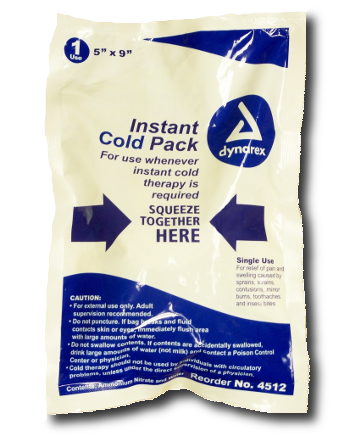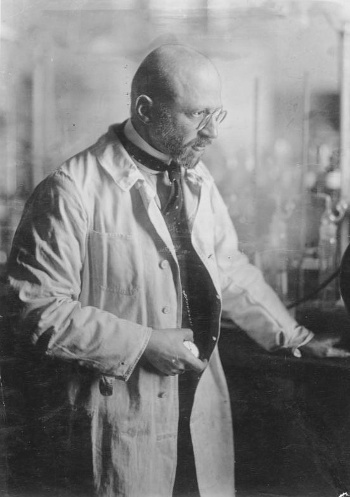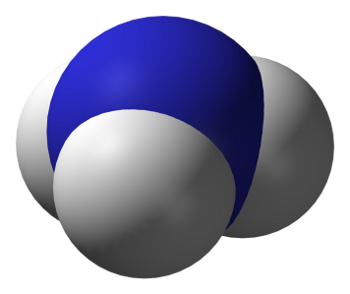Ammonia Synthesis
September 15, 2014
The
household chemical that everyone knows as "ammonia" is not really
ammonia,
NH3. It's the
solution of ammonia, which is a
gas, in
water, forming
ammonium hydroxide, NH
4OH. Ammonium hydroxide is not easily isolated, so its only existence is as [NH
4]
+ and [OH]
- in the water solution. One possible reason to quit
smoking is that ammonium hydroxide is purposely added to some
tobacco products. You'll be surprised to see the long list of such tobacco additives.[1]
Although household ammonia is a popular item among
kitchen chemists, all
chemistry has its
precautions. Household ammonia should never be mixed with household
bleach, or
cleaning products containing bleach, since these will react to form nasty
chemicals. Household bleach is
sodium hypochlorite,
NaClO, so one possible
reaction, after a chain of prior
dissociations, is
2NH3 + Cl2 → 2NH2Cl
The
product of this reaction, NH
2Cl,
chloramine, is a
respiratory irritant which damages
mucous membranes, and it may also be
carcinogenic.
One
compound of ammonia,
ammonium nitrate, NH
4NO
3, is an important
fertilizer because of its high
nitrogen content. One incidental use, as shown in the photograph, is as a component of instant
cold packs, since the
hydration of the
salt (mixing with water) is
endothermic, consuming 26.2
kJ/
mole of
heat. It's also used as an
explosive and as a component of explosives.

I received this ammonium nitrate cold pack from a dentist after some minor oral surgery.
The pack contains a pouch of water that wets the ammonium nitrate when it's broken.
The hydration of ammonium nitrate is endothermic, drawing heat from the environment (i.e., my cheek).
(Photograph by the author.)
The only way to get large quantities of ammonium nitrate prior to 1909 was to
dig it out of the ground. In that year,
German chemist,
Fritz Haber developed a
catalytic process to create ammonia from the
elements. Once you have ammonia, a simple reaction with
nitric acid, HNO
3 produces ammonium nitrate,
HNO3 + NH3 → NH4NO3
Haber's process was developed to an
industrial scale by
Carl Bosch, so the process is commonly known as the
Haber-Bosch process. Haber received the 1918
Nobel Prize in Chemistry for "for the synthesis of ammonia from its elements," while Bosch needed to wait until 1931 for his Nobel Prize.

Fritz Haber in 1905.
Haber's discovery of a catalytic process for the production of ammonia earned him a Nobel Prize in Chemistry in 1918.
Haber's work on chemical weapons during World War I caused considerable controversy, and he's also known as the "father of chemical warfare."
(Deutsches Bundesarchiv (German Federal Archive), Photograph No. 183-S13651, via Wikimedia Commons))
Today, ammonia is big business. According to an article in
Science,[2] 120 million
tons of nitrogen are annually extracted from the
air in its production as a
precursor to fertilizer production. About two percent of the world's
energy is used to produce ammonia, and the market for ammonia is expected to exceed $100 billion in 2019.[2]
There is, however, a dark side to ammonia. Although there's plenty of nitrogen in the
atmosphere available for the
synthesis of NH
3, the hydrogen comes from
natural gas. Ammonia synthesis consumes 5% of the world's natural gas, and it pumps hundreds of millions of tons of
carbon dioxide into the atmosphere as a
byproduct.[2] That's why a team of
chemists at
George Washington University (Washington, D.C.) was inspired to find an alternative to the Haber-Bosch process.[2-4]
This
research was inspired by the operation of
fuel cells that generate
electricity by dissociating ammonia into nitrogen and hydrogen.[2] These fuel cells use a
molten mixture of
potassium hydroxide and
sodium hydroxide as an
electrolyte, so the George Washington University team decide to test this electrolyte in the reverse reaction; that is, synthesizing ammonia from its elements. Water was used as the hydrogen source.[2-4]
The process still requires the traditional
iron catalyst, in this case a
nanoscale iron oxide suspended in the molten salt. One problem area is that this catalyst is only stable for a few hours.[3] At the
temperatures involved, the water is in the form of
steam.[3] With application of an
electrical current, the iron oxide
nanoparticles become
electron-rich, and the water and nitrogen combine at their surface to form ammonia.[3-4]
The electrolyte is a 50:50 (by
mole) mix of potassium hydroxide and sodium hydroxide. At 200
°C, ammonia is produced at 1.2
volts and less than two
milliamps per
square centimeter. Increasing the temperature to 250°C and running at a
pressure of 25
bar to contain the steam decreases the voltage to 1.0 volt at the same current.[3] Either of these conditions is milder than that of the Haber-Bosch process, 450°C and 200 bar.[4]
The
coulombic efficiency of the process is 35%; that is, 35% of the applied current results in the formation of ammonia
molecules.[3] Chemists still have a way to go to
mimic nature for extraction of nitrogen from the air.
Nitrogen-fixing bacteria do this at
room temperature.[4]

Bocci Ball, anyone?
If we could see an ammonia molecule, it would look somewhat like this, but quite a bit fuzzier.
(Via Wikimedia Commons.)
![]()
References:
- Ingredients Added To Tobacco, Philip Morris USA.
- Robert F. Service, "New recipe produces ammonia from air, water, and sunlight," Science, vol. 345 no. 6197 (August 8, 2014), p. 610.
- Stuart Licht, Baochen Cui, Baohui Wang, Fang-Fang Li, Jason Lau, Shuzhi Liu, "Ammonia synthesis by N2 and steam electrolysis in molten hydroxide suspensions of nanoscale Fe2O3," Science, vol. 345 no. 6197 (August 8, 2014), pp. 637-640.
- Jake Jacobs, "Water and air are all you need to make ammonia—one of world's most important chemicals" Phys.org, August 8, 2014.
Permanent Link to this article
Linked Keywords: Household chemical; ammonia; nitrogen; hydrogen; solution; gas; water; ammonium hydroxide; smoking; tobacco; amateur chemistry; kitchen chemist; chemistry; safety; precaution; bleach; cleaning agent; cleaning product; chemical compound; chemical; sodium hypochlorite; sodium; chlorine; oxygen; chemical reaction; dissociation; product; chloramine; respiratory system; irritation; irritant; mucous membrane; carcinogen; carcinogenic; ammonium nitrate; fertilizer; nitrogen; ice pack; cold pack; hydration; salt; endothermic; joule; kJ; mole; heat; explosive material; dentist; oral and maxillofacial surgery; environment; cheek; mining; German; chemist; Fritz Haber; catalysis; catalytic; element; nitric acid; industrial process; industrial scale; Carl Bosch; Haber-Bosch process; Nobel Prize in Chemistry; catalytic process; chemical weapon; World War I; Wikimedia Commons; Science; tonne; ton; atmosphere of Earth; air; precursor; energy; chemical synthesis; natural gas; carbon dioxide; byproduct; chemist; George Washington University (Washington, D.C.); research; fuel cell; electricity; molten; potassium hydroxide; sodium hydroxide; electrolyte; iron; catalyst; nanoscopic scale; nanoscale; iron oxide; temperature; steam; electrical current; nanoparticle; electron; mole; celsius; °C; volt; milliamp; square centimeter; pressure; bar; Faraday efficiency; coulombic efficiency; molecule; biomimicry; nitrogen-fixing bacteria; room temperature; Bocci Ball.